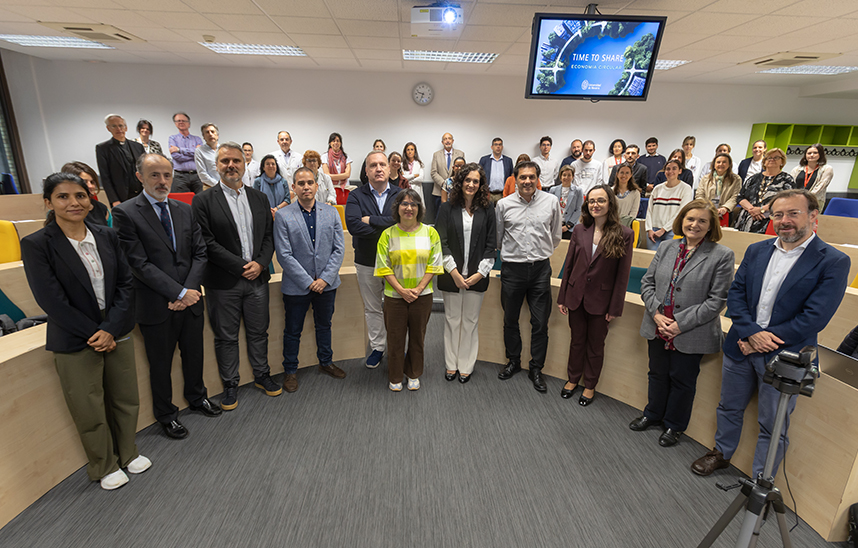Global study on dark diversity reveals hidden impact of human activities on nature
The international research , published in "Nature" and involving scientists from the BIOMA Institute of the University, sample that in regions disturbed by humans many native plant species are absent in their natural habitats.

FotoManuel Castells<br>/Ricardo Ibáñez, investigador del Instituto de Biodiversidad y Medioambiente BIOMA de la Universidad de Navarra.
02 | 04 | 2025
Natural vegetation often lacks many species that could be present, especially in regions that are heavily affected by human activities. This is one of the conclusions of a global study published in "Nature" and in which researchers from the Biodiversity and Environment Institute BIOMA of the University of Navarra have participated.
In the researchwork collaborated with more than 200 scientists from all over the world - belonging to the DarkDivNet research network - and studied plants in nearly 5,500 plots in 119 regions around the globe. In each plot, local researchers recorded all plant species and identified "dark diversity," i.e., native species that could live there but were absent.
Between 2019 and 2020, Ricardo Ibáñez, researcher at the BIOMA Institute, and Mercedes Valerio, PhD from the School of Sciences of the University of Navarra, undertook two intensive field sampling campaigns in the area around the Navarre town of Napal, in the Romanzado valley. "Despite the challenges posed by COVID-19 and some heat waves, in those two years we studied a total of 96 plots randomly distributed within a radius of 10 km", says Ricardo Ibáñez, researcher at the BIOMA Institute.
The researchers from the University of Navarra worked in corners of the Arbaiun and Benasa foci, in remote areas of the Leyre and Illón mountain ranges, or in some ravines such as Racas or Cerréncano. "The work was intense in each plot. In one of them, near Bigüézal, we counted 95 species, one of the most diverse of the global project ".
The field work allowed the researchers to understand the potential plant diversity at each site and to measure how much of that potential diversity was actually present. The study reveals that in regions with little human impact, ecosystems often contain more than a third of the potentially suitable species, while other species remain absent mainly due to natural reasons. Conversely, in regions heavily impacted by human activity, ecosystems contain only one in five suitable species.
The level of human disturbance in each region was measured using the Human Footprint Index, which includes factors such as human population density, changes in land use (such as urban development and agriculture) and infrastructure (roads and railroads). The study sample that the plant diversity of a site is negatively affected by the level of the Human Footprint Index and most of its components in a surrounding area , up to hundreds of kilometers away.
For Ricardo Ibáñez, "this result is alarming because it shows that human disturbances have a much wider impact than previously thought, even affecting nature reserves. Pollution, logging, garbage, trampling and human-caused fires can exclude plants from their habitats and prevent recolonization".
This global research highlights the importance of maintaining and improving ecosystem health beyond nature reserves. The concept of "dark diversity" provides aninternship tool for conservationists to identify suitable missing species and track progress in ecosystem restoration.
reference letter bibliographic
Pärtel, M., Tamme, R., Carmona, C.P. et al. Global impoverishment of natural vegetation revealed by dark diversity. Nature (2025).




